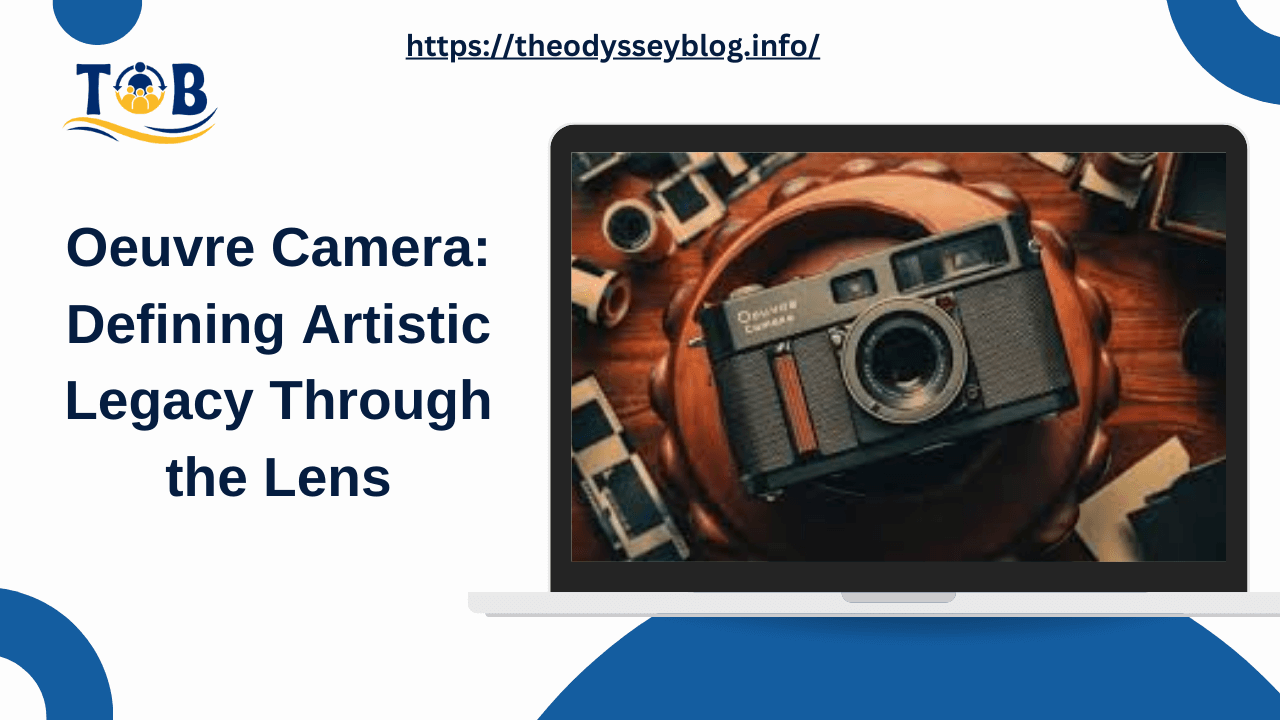With iconic directors and photographers, choices of cameras become inextricably woven into the creative voice and signature style. Thus, through an angle, lighting, movement, or color palette chosen, the camera style is inextricably woven into the author’s oeuvre as a formative aspect of how people recall and remember their work. Let’s now get a bit deeper into practice to examine what techniques and approaches the iconic filmmakers and photographers employed for a memorable “Oeuvre camera.”
What is an Oeuvre Camera?

An oeuvre camera is a way of describing the visual language of a filmmaker or photographer; it describes the unique style a filmmaker uses his or her camera to tell a story, express emotions, and create a mood. Consistent choice in such oeuvres often can be seen in:
Camera Movements:
Some directors use continuous camera movements, such as panning, tracking, or slow zooms. They give rhythm and motion to the scenes.
Lighting and Color Palette:
In most instances, lighting and color set the tone and atmosphere of the oeuvre camera. This is the most significant aspect of a creator’s oeuvre camera. For instance, Christopher Nolan uses natural lighting and desaturated colors to emphasize his storytelling style.
All these elements help to create an artist’s voice. The camera becomes part of their creative identity instead of just a tool.
Importance of an Oeuvre Camera
For artists, an oeuvre camera is not something in terms of technical consistency but rather their point of view in art. It gives cohesion to their different works and allows them to give hard ideas through various projects. An oeuvre camera:
Provides a Unique Brand:
Audiences come to recognize that particular style as belonging to a specific creator’s name. This not only builds a loyal fan base but also makes the creator’s fame higher.
Enhances Storytelling:
A cohesive style can support the narrative, whether in suspense, intimacy, or surrealism. For example, Tim Burton’s use of dark, whimsical visuals helps him create his eerie yet fantastical worlds.
Captures Emotional Depth:
Whenever artists use a consistent style, they are able to carry emotions through in a less obvious yet more realistic sense. For example, Greta Gerwig uses very naturalistic, warm lighting to create the emotional depth of her characters.
Notable Examples of Oeuvre Camera
Most film directors and photographers had personal styles, which put the camera at the heart of their creative identity. Amongst a few iconic cases, there are the ones from Wes Anderson.
Wes Anderson
Wes Anderson can be identified in terms of symmetrical framing, vibrant color palettes, and compositionally accurate images. The use of static, head-on shots by him centered subjects with a sense of order and whim that enhances the charm of his narratives.
Alfred Hitchcock
The “Master of Suspense,” in many ways, Hitchcock’s oeuvre camera is shot from high angles, with many rapid cuts, and tight close-ups, creating that sense of tension and anxiety. His ability to evoke emotions through the camera will always be part of why his style is so remarkable.
Stanley Kubrick
His sharp framing with many one-point perspectives is very hauntingly precise. His application of symmetry and depth in The Shining and 2001: A Space Odyssey creates a hauntingly beautiful feeling that inspires many other film directors.
Roger Deakins
In any case, one might see Deakins through a prism of deep color or naturalistic lighting in works like Blade Runner 2049. One might focus on deliberate shadow usage through to perfectly balanced compositions resulting in every frame adding to the telling of your tale as much as it.
Setting up Your Camera Style
For the emerging filmmaker and photographer, an “oeuvre camera” means a personal approach to the use of the camera that feels true to the artist’s vision. This usually entails experimentation with various techniques before finding what works best in line with one’s vision. Here are some tips for crafting a unique camera style:
Experiment with Angles and Movements:
Try different shot types, angles, and movements to see what works. Recording how each technique works toward your storytelling will help you develop a cohesive style.
Play with Color and Lighting:
Lighting can make or break the atmosphere of a scene or photo. Testing different lighting setups and color schemes can help figure out which styles best serve your vision.
Observe Other Artists:
Learn about what other notable filmmakers or photographers have created. This could inspire and give you the technical edge you need to create more effective works of art. Try to realize how the choices they made influence their storytelling.
Select Your Techniques:
The oeuvre cameras are best understood when the artists start filtering their techniques. You would select just a few distinctive features that help you communicate your vision most effectively.
FAQs
1. How is an oeuvre camera different from a normal camera style?
An oeuvre camera transcends technical excellence and embodies the artist’s vision, unique in creativity and perspective. Techniques and visual elements keep popping up and give the work a certain air of recognizability. Thus, an oeuvre camera style becomes a necessity for an artist’s identity.
2. Can photographers have an oeuvre camera style like filmmakers?
Absolutely. Most photographers have a signature style of their own, the expression of which is made out of lighting, composition, subject matter, and an approach to post-processing. Continuity builds up this oeuvre, and everything will feel connected to every other piece, strengthening a photographer’s signature aesthetic.
3. How long does it take to develop a distinctive oeuvre camera style?
A unique style is established differently for everyone. In most cases, it will emerge over time as the creator becomes more experienced and tries different techniques, figuring out what they like and dislike. Some people find their style right away, and others may evolve theirs over years of creating.
FAQs
An “oeuvre camera” is more than the technicalities of filming or photographing. It is a language in itself, a way of storytelling that speaks to the viewer and gives depth to an artist’s body of work. For those artists who want to make their mark, developing a unique camera style can mean the difference between a moment in time and a legacy in film and photography. Whether through color, composition, movement, or perspective, an oeuvre camera comes to stand as the most important means of defining and differentiating one’s art voice.

